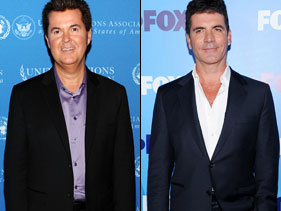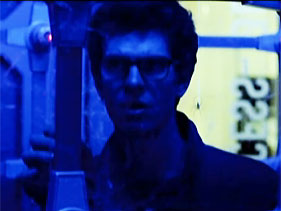I found 2011 to be a great, overstuffed year in film, though the sweeping trend of nostalgia that peaked during this awards season left me a little cold. Hugo , War Horse , The Artist , The Adventures of Tintin , The Help , even the self-aware looking back of Midnight in Paris — when it’s been such a turbulent 12 months beyond the movies, the comfort of evoking the past, especially the cinephilic past, is understandable, particularly with attendance down once again. But the features I really loved tended to be more prickly, vital affairs, about tragedy and life messily, stubbornly going on in its aftermath — ones that reminded us that film can not only be a great escape, but can also engage and reflect the outside world. 10. Shame Steve McQueen’s sophomore effort took flack from some who found it moralizing in its portrayal of sex addiction, but it’s not a film about a condition, it’s a film about damage. Michael Fassbender plays a man who’s left a traumatic childhood behind and has shored himself up in the city that never sleeps with an immaculate condo and a high-powered job that almost hide his underlying desperation and his inability to connect or open up to anyone on anything other than a physical level. It’s one of the loneliest portraits of urban living I’ve ever seen. 9. Warrior The neglected blockbuster of our Occupy Wall Street era, Warrior drapes Rocky trappings over characters and settings more immediate than you’d ever expect at a multiplex. Its two brothers, in what should have been star-making turns from Tom Hardy and Joel Edgerton, head to the cage after taking beatings elsewhere — one’s left the Marines on less than ideal terms after the death of colleague, the other’s upside down on his mortgage and unable to support his family on a teacher’s salary. Add to that the fact that the tournament in which they both compete was started by a former Wall Street type putting up the money to see “who the toughest man on the planet is,” and you have a rousing, violent fight film with a seriously bittersweet edge. 8. The Arbor Andrea Dunbar grew up in run-down Bradford council estates, drank heavily, had three kids by different fathers, wrote a trio of acclaimed plays about the life she knew and died at age 29. Clio Barnard’s documentary about the playwright brilliantly stages its interviews as their own performance, lip-synched by actors in the settings in which Dunbar and her children grew up and lived, and offering a piercing glimpse of how tragedy is taken up — her second work Rita, Sue and Bob Too was made into a film directed by Alan Clarke — and passed down, to her heroin-addicted eldest Lorraine. 7. Certified Copy It’s never clear which part of Juliette Binoche’s antiques dealer and William Shimell’s writer’s relationship is the pretense — are they strangers who play at being married, or a married couple playing at meeting as strangers? The thesis of Shimell’s book may or may not line up with that of Abbas Kiarostami’s film — the relationship between art and reproduction, original and copy — but the figuring out, and the slippery nature of the connection the pair on screen, is delicious. 6. The Tree of Life It’s a film about a family that stretches from the beginning of the universe to a possible vision of the afterlife — if it may not be wholly lovable, its ambition alone should earn respect. But it’s the evocative immersion on childhood that lingered with me after Terrence Malick’s more grandiose imagery had faded, the tactile sense of that Texas street, the house, the endless possibility, uncertainty and wonder of being young and new to the world, the flashes of memory — the offering of a drink to a prisoner, the caress of a baby’s foot, the goading of a younger sibling to touch a light socket — that break up the more iconic moments with startling specificity. 5. Margaret Messy, vivid and wonderful, Kenneth Lonergan’s difficult production has become a critics’ cause, in part because of how tough it’s been to actually see. It’s worth the trouble, and in some ways better because of the long wait in reaching the few theaters it did — it now looks less like a movie about post-9/11 New York and more one about the city in all of its anonymous, chaotic glory, about a teenage girl’s first horrific brush with mortality and about the strange places that life leads us. 4. Take Shelter Few films have attempted to capture our age of anxiety like Jeff Nichols’s drama, about catastrophic dreams that may be caused by mental illness, but seem just as much to spring from the sense of uncertainty with which we’ve all been infected. Anchored by a stunning performance from Michael Shannon, Take Shelter presents a look at quiet breakdown spurred on by a desire to protect one’s loved ones, and pairs it with frightening scenes of monstrous storms and shadowy attackers that rival any of this year’s horror movies. 3. Into the Abyss Trust Werner Herzog to find stories so strange and moving in a terrible small-town triple murder over an automobile. The Texas of this film is recognizable, but it’s also near-mythic — a place of universally broken families, sudden violence, prison reunions and hard-earned redemption. Taken alone, the interviews with Melyssa Burkett or Jared Tolbert would be enough to make the film. As part of a kaleidoscope of suffering and hope, they’re highlights in something dark, funny and expressly moving about the persistence of human nature in the face of loss. 2. A Separation A marriage falls apart over the decision of whether or not to leave Iran in Asghar Farhadi’s magnificent drama, and encompasses in its disintegration a snapshot of the fractured nation that’s so nuanced, empathetic and complex it quickens the heart. Certainly the smartest film of the year, both as a self-contained work and in the respect it offers the audience, A Separation is unadorned by a score or flashy camera tricks — it doesn’t need them. 1. Melancholia The opposite of love isn’t hate, it’s indifference, and in Lars von Trier’s film it’s the awesome force of Kirsten Dunst’s depression-fueled disinterest that exudes a gravitational drag on everyone around here even before the arrival of the destructive planet of the title. Before the breathtaking apocalyptic imagery appears — the object looming closer in the sky, the static sparking from fingertips — Melancholia is already a devastating look at an illness that leaves you unable to connect to what life has to offer, even on an extravagant wedding day that seems to compress half a lifetime into a night. But it’s that the film turns to offer a sympathetic eye to Charlotte Gainsbourg’s anxious sibling in the second half that makes it great, and that gives it a soul. As she struggles to hold everything together in the face of approaching disaster, even Dunst’s depressive is moved to offer her a conciliatory gesture as the world ends. Follow Alison Willmore on Twitter . Follow Movieline on Twitter .
Original post:
Margaret, Melancholia and More: Alison’s Top 10 Movies of 2011































